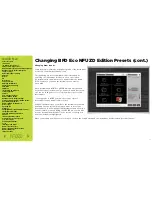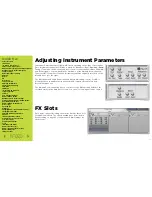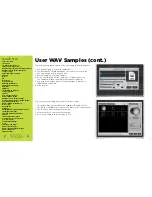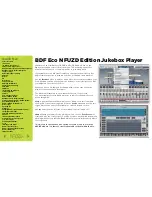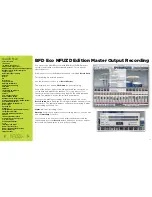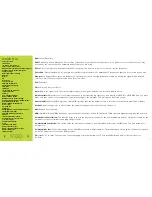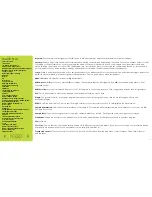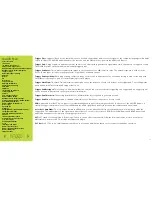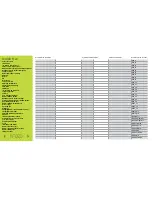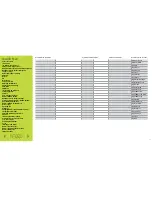
Quick Nav
Table of Contents
Introduction
I/O Module Panel Layouts
Snare and Tom Trigger Zones
NFUZD USB Key (Drive) and Data Management
NSPIRE Series I/O Module Navigation
Trigger Settings
Hi-Hat (HH) Trigger Settings
Kit Menu
Reverb
EQ
Mixer Menu
Saving a UserKit
Adjusting the MIDI Map
Trigger Function Settings
Click Menu
SEQ Menu
Integration with Computer
Setup Suggestions
Sync Key
Auto O
ff
and Sleep Mode
BFD Eco NFUZD Edition
NSPIRE Series I/O Module Settings
Getting Started w/ BFD Eco NFUZD Edition
Basic Mixing Adjustments
BFD Eco NFUZD Edition E
ff
ects
Grooves Page
Options Menu
Help Menu
Changing BFD Eco NFUZD Edition Presets
Changing Drum Sounds
Adjusting Instrument Parameters
FX Slots
Instrument and Mixer Faders
Getting New Professional Sounds
User .wav Samples
Exporting Sound Banks
Loops
Installing Sound Banks
BFD Eco Jukebox Player
BFD Eco Master Output Recording
BFD Eco Mixing Tips
Included Sounds
Keymap:
The keymap is the assignment of MIDI notes to di
ff
erent samples and functions within a musical instrument.
Latency:
Latency is basically the amount of time between hitting the drum pad and hearing the sound. There are a number of factors that
contribute to the performance of your system and the amount of latency introduced. When you hit a pad, the signal starts there and
travels through the module, over the USB or MIDI cable, into the computer processor, through the software application(s), into the audio
processing part of your audio interface, through the amplifier section and to either speakers and/or headphones.
Learn:
Learn is a function that allows you to assign parameters to a MIDI event. Select the Learn function and strike the trigger pad or turn
a MIDI controller dial and it will be assigned to that parameter. This is a quick way to make assignments.
MIDI:
MIDI stands for Musical Instrument Digital Interface.
MIDI Grooves:
MIDI grooves are preset MIDI recordings of drum parts that can be triggered by a MIDI event and put together to form
full compositions.
MIDI Velocity:
Velocity is measured from zero to 127. It is applied to the volume response of the trigger pad and the sound it generates.
Pan:
This is a short way to refer to the panning of an instrument within a stereo field.
Plugin:
The general term for a computer program that enhances another program. In this case we are referring to e
ff
ects and
instrument plugins.
RTAS:
Real Time Audio Suite. This is a specific plugin format for the older versions of Pro Tools Digital Audio Workstation.
Sample Articulation:
This is the actual articulation of the sample. For example a Snare Drum sample has multiple voices such as Hit, Rim
Shot and Cross Stick.
Sample Rate:
This
is the average number of samples captured within one second. The higher the rate, the higher the resolution.
Standalone:
Stand Alone refers to the ability to run a computer application by itself without the need for another program.
SW:
Software.
Tool Tips:
This is a function that can be turned on and o
ff
in di
ff
erent computer programs. If you hover your curser over a software button,
a small pop–up window will give you an explanation in a little pop–up window.
Transport Controls:
These are controls for Play, Stop, Record, Fast–Forward, Rewind, and other control features. Think of this like your
media player.
6 7
Содержание NSPIRE series
Страница 1: ...U S E R M A N U A L O P E N...

